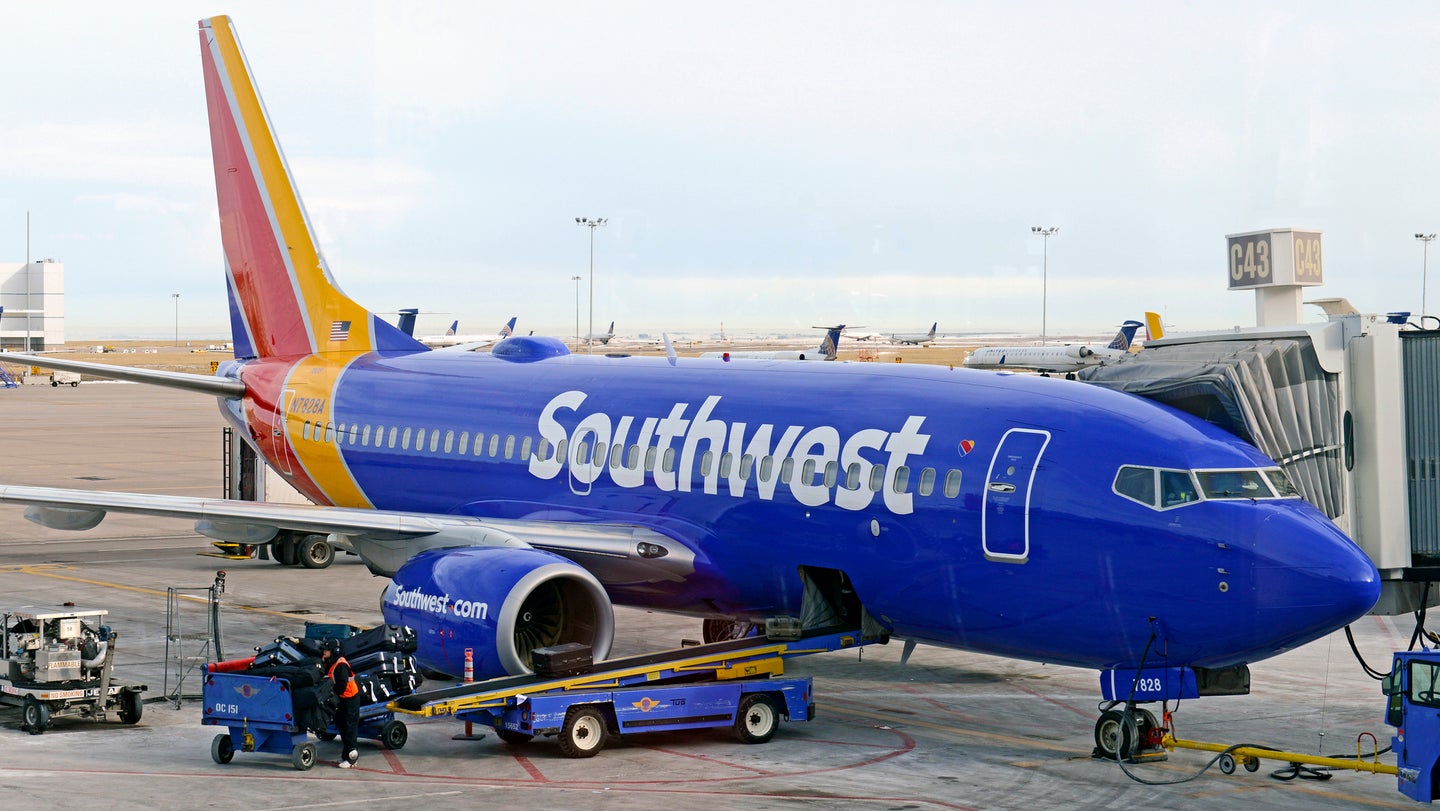
Southwest Airlines flights are (mostly) back on schedule following a holiday week’s worth of unprecedented cancellations that stranded hundreds of thousands of travelers across the country. While many weary travelers are reportedly still waiting to reunite with their lost luggage, others continue to voice bewilderment at how such a logistical nightmare occurred within one of the nation’s most popular aviation providers.
The answer, per industry experts alongside Southwest’s own CEO—employee scheduling software that debuted around the same time as the Xbox 360 and PlayStation 3.
[Related: Watch this big battery pack drop 50 feet in an aircraft safety test.]
According to multiple recent rundowns of the debacle, Southwest’s long-running reliance on a crew scheduler program called SkySolver is largely to blame as the catalyst behind cascading failures described last week as “unacceptable” by Secretary of Transportation Pete Buttigieg. Simply put, SkySolver already was nearing the “end of its life” even before winter storm Elliott arrived, and the nearly two-decade-old program couldn’t handle the scalability needed to tackle the multiple waves of cancellations and delays. This left actual Southwest employees to manually attempt matching flight crews with available planes, all while navigating strict aviation worker federal regulations.
Southwest pilots have reportedly begged company executives to update the “antiquated” systems since at least 2015, with demands for internal technology updates and labor reforms cropping up in union negotiations multiple times in 2022 alone. But despite the clear warning signs—including a similar cancellation wave last holiday season—Southwest has done little over the years aside from piecemeal updates to SkySolver’s off-the-shelf product.
From there, the crisis compounded as stranded passengers and flight crews attempted to contact Southwest representatives over the phone, resulting in estimated wait times as long as eight or more hours. Those delays exacerbated the existing delays.
[Related: How a ‘digital twin’ of an Apache helicopter could help keep these old birds flying]
As Columbia University professor Zeynep Tufekci recently explained in an op-ed for the The New York Times, this largely stems from “technical debt,” a term used in reference to a company’s gap between its existing software and its necessary updates to maintain operations. Although Tufekci recounts that airline companies were some of the first businesses to adopt automated scheduling systems, they haven’t done much to keep those systems up-to-date and scalable to handle modern needs and markets.
So, despite Southwest’s previous CEO Gary Kelly praising the airline’s “wonderful technology” in 2021, it has since experienced multiple logistical collapses due to its long-delayed adoption of alternatives such as cloud-based data systems that can handle crises as large as winter storms. Additionally, transitioning away from largely phone-reliant systems—such as what Southwest flight attendants needed to use last week for rescheduling—would east congestion points. And until companies like Southwest actually start investing in bringing their software into the modern age, travelers can continue to expect future headaches.
The post You can blame Southwest Airlines’ holiday catastrophe on outdated software appeared first on Popular Science.
Articles may contain affiliate links which enable us to share in the revenue of any purchases made.
from Popular Science https://ift.tt/OzsHbag




0 Comments